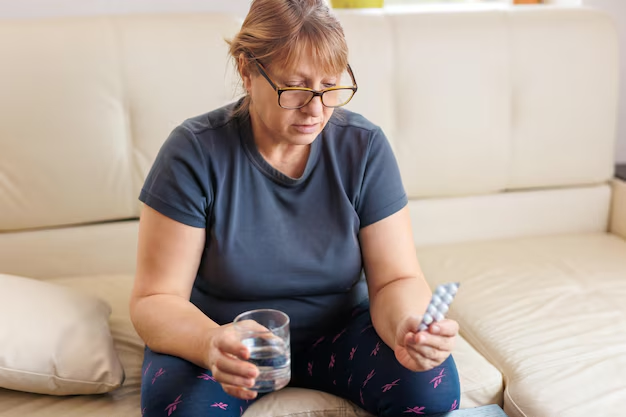Considering Aleve for Daily Arthritis Relief? Here’s What You Should Know
Dealing with arthritis can be a daily struggle, right? With joint pain and inflammation making even the simplest tasks challenging, it’s no wonder that many people turn to pain relievers like Aleve for relief. But if you’re contemplating taking Aleve every day for arthritis, you may be wondering, “Is it safe to do so?” Let's explore the potential benefits and risks, practical tips, and alternatives, empowering you to make informed decisions about your health.
Understanding Aleve and How It Works
Aleve, the brand name for naproxen, is a nonsteroidal anti-inflammatory drug (NSAID). It’s known for its ability to reduce inflammation, relieve pain, and even lower fevers. How does it work? By inhibiting the production of chemicals in the body called prostaglandins, which are responsible for inflammation and pain.
Why Choose Aleve?
- Long-lasting Effects: One of Aleve’s significant advantages is its extended-release formula, making it effective for 8 to 12 hours.
- Available Over-the-Counter (OTC): Without the need for a prescription, it's accessible for those seeking quick relief.
Is It Safe to Take Aleve Daily for Arthritis?
While Aleve is effective for short-term pain relief, the idea of taking it every day for arthritis raises an essential question about safety. Let’s weigh the potential benefits and risks.
Potential Benefits of Daily Use
- Reduced Pain and Swelling: Aleve can help manage chronic pain and inflammation, improving day-to-day functioning.
- Improved Mobility: With less pain, individuals may find it easier to engage in physical activity, which is crucial for joint health.
Risks of Long-term Use
- Gastrointestinal Issues: Daily use of Aleve can lead to stomach ulcers or bleeding.
- Cardiovascular Concerns: There's an increased risk of heart attack or stroke, especially if taken in high doses or over long periods.
- Kidney Damage: Prolonged use can affect kidney function, which is particularly concerning for older adults.
Important: Always consult a healthcare professional before starting any long-term medication plan. Your doctor can offer guidance tailored to your specific health needs.
Exploring Alternatives to Daily NSAID Use
Maybe you're wary of the risks associated with long-term Aleve use. The good news? There are alternative treatments and lifestyle changes that can help manage arthritis symptoms.
Non-Pharmacological Approaches
- Physical Therapy: Exercise tailored to your capabilities strengthens muscles around the joints and improves flexibility.
- Dietary Adjustments: Incorporate anti-inflammatory foods such as omega-3-rich fish, green tea, and leafy greens.
- Heat and Cold Therapy: Applying heat can soothe stiff joints, while cold packs can reduce inflammation.
Other Medications
- Topical NSAIDs: Gels or creams applied directly to the skin over aching joints offer pain relief with reduced systemic side effects.
- Acetaminophen (Tylenol): While not an NSAID, it can be used for pain relief without affecting inflammation.
- Prescription Options: In some cases, stronger prescription medications or corticosteroid injections may be necessary.
Complementary Therapies
- Acupuncture: Some find relief through acupuncture, which may help by releasing the body’s natural painkillers.
- Mind-Body Techniques: Techniques such as yoga, tai chi, or mindfulness meditation can reduce stress and improve pain perception.
Practical Tips for Safe Aleve Use
If you and your healthcare provider decide that Aleve is appropriate for your arthritis management, here are some tips for using it safely:
- Follow Recommended Dosage: Never exceed the suggested amount on the packaging or prescribed by your doctor.
- Take with Food or Milk: This can help minimize stomach issues.
- Stay Hydrated: Adequate water intake supports kidney function.
- Monitor Symptoms: Keep an eye on any adverse effects such as stomach pain, dark stools, or changes in urination.
Listening to Your Body
Lastly, remember that your body often sends signals when something isn't right. Pay attention to pain levels, side effects, and how you feel overall. This self-awareness, combined with regular consultations with your healthcare provider, will help you adjust your treatment plan as needed.
Ultimately, managing arthritis is a personal journey, and what works for one person may not work for another. By staying informed about the options available and communicating openly with your healthcare provider, you can find a treatment plan that’s best suited to your needs.
Quick Reference Summary
Here is a quick look at essential points about using Aleve safely for arthritis:
- Benefits: 🕒 Long-lasting pain relief, improved mobility
- Risks: ❗ Potential for stomach issues, cardiovascular risks, kidney damage
- Alternatives: 🚴♂️ Physical therapy, dietary changes, topical NSAIDs
- Safe Practices: 📌 Follow dosage, take with food, monitor your body’s responses
- Reminder: 🩺 Always consult with a healthcare professional for personalized medical advice.
Stay informed, stay safe, and remember, you’re in control of your health journey. 🌟

Related Articles
- Are Bananas Bad For Arthritis
- Are Tomatoes Bad For Arthritis
- Can An Inflamed Nerve Cause Arthritis
- Can Arthritis Be Cured
- Can Arthritis Be Reversed
- Can Arthritis Become Septic After Infection From Injection
- Can Arthritis Cause Numbness
- Can Arthritis Cause Swelling
- Can Cracking Knuckles Cause Arthritis
- Can Cracking Your Knuckles Cause Arthritis